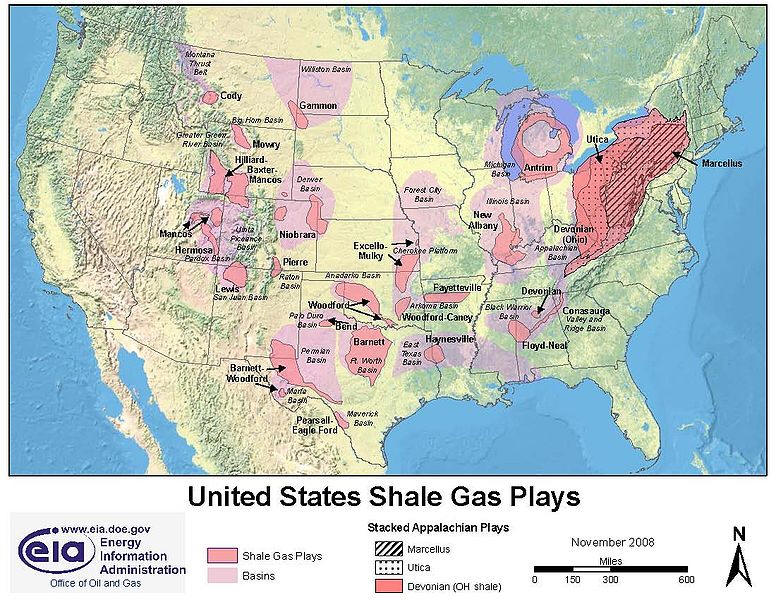
With all the gloomy economic news coming out of late, one bright spot flew under the radar last week: the United States is poised to be the proverbial center of the energy universe.
A recent study by Harvard Research Fellow Leonardo Maugeri found that the United States’ incredible shale reserves represent “the most important revolution in the oil sector in decades.”
Thanks to the technological revolution brought about by the combined use of horizontal drilling and hydraulic fracturing, the U.S. is now exploiting its huge and virtually untouched shale and tight oil fields, whose production – although still in its infancy – is already skyrocketing in North Dakota and Texas.Few Americans are more cognizant of this energy revolution’s possibilities than those who live in the towns sitting above the nation’s largest shale formations. The Heritage Foundation traveled to Willison, North Dakota, above the massive Bakken shale, to hear first-hand how the oil boom there has improved residents’ lives.
But there are forces looking to undermine North Dakota’s oil boom. “The area that we worry the most about would be the federal government and regulations,” explained Willison Mayor Ward Koeser, “specifically the Environmental Protection Agency.”
Koeser’s concerns are not without merit. The EPA has a history of wrongfully targeting companies using hydraulic fracturing for supposed environmental contamination. When a top EPA official, Region 6 administrator Al Armedariz, compared his enforcement philosophy to Roman crucifixions, the agency’s history of enforcement actions against oil and gas drillers – both use hydraulic fracturing to extract resources from shale – belied Armendariz’s subsequent apology and walk-back.
Armendariz just took a job at the Sierra Club, a radical environmentalist group that has undertaken a massive campaign against the extraction of natural gas from shale only a few years after it championed natural gas as a cleaner alternative to coal and oil.
The left’s emerging hostility to “fracking” has the potential to derail the amazing economic opportunity that shale presents. So it should come as little surprise that the political consequences of that hostility are bearing themselves out in places like Western Pennsylvania, which sits on huge shale gas reserves.
Roll Call’s Stuart Rothenberg reported over the weekend that Pennsylvania, which over the past 20 years has moved further left in terms of its voting patterns, is suddenly more competitive. “Western Pennsylvania increasingly looks like West Virginia or southeastern Ohio,” Rothenberg notes.
Rothenberg, appropriately concerned with the political analysis, did not connect the dots: Western Pennsylvania, Southeastern Ohio, and West Virginia are all major energy-producing states (or parts of states). The Utica, Marcellus, and Devonian shale formations, for instance, represent major economic opportunities in those states.

From the federal perspective, then, a sensible energy policy would at least refrain from proactively discouraging those opportunities, as Heritage’s Nick Loris has suggested:
An aggressive energy policy that opens access, provides a timely permitting process as well as environmental and judicial review, and places a freeze on new environmental regulations from the Environmental Protection Agency (EPA) would go a long way to help lower energy prices, create jobs, and bring revenue into the financially strapped government that’s racked up [over] $15 trillion in debt.But left-wing environmentalists continue to fight against the country’s natural gas and oil boom. That boom has the potential not just to revitalize parts of the American economy, but to infuse economic vitality into some of the nation’s most economically distressed communities. Don’t be surprised when those communities stand up to regulatory overreach and environmental hysteria.
Quick Hits:
- Today, the AP blamed the recent summer weather on global warming. The same AP reporter blamed snowstorms in 2011 on global warming.
- Questions remain as to whether Rep. Charlie Rangel (D-NY) did or did not win the recent Democratic primary in his district. His opponent, state Sen. Adriano Espaillat, has filed legal challenges.
- Unemployment has reached record highs in the Eurozone, hitting 11.1 percent.
- Syria has created an “archipelago” of 27 torture facilities where thousands of dissidents have been tortured since the uprising began in 2011.
- New Hampshire is now one of 11 states to offer scholarships for underprivileged students to attend private schools through tax credit scholarship programs. Read more here.
No comments:
Post a Comment